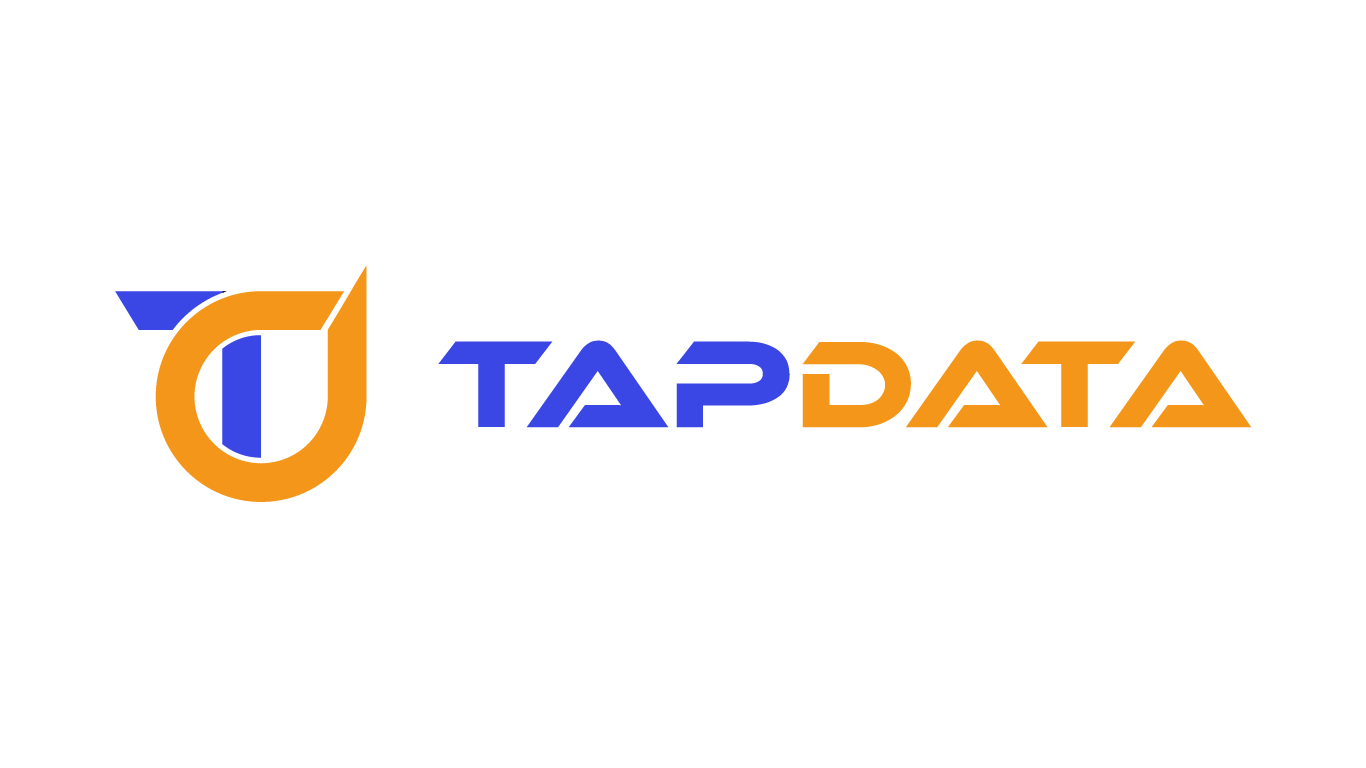Top Data Management Innovations to Watch in 2025

Data management is no longer just about storing and organizing information. It has become a critical driver of innovation and growth. Businesses that embrace modern data strategy gain a competitive edge by making faster, smarter decisions. In 2025, trust in data will play a pivotal role. Many organizations struggle with this—67% report a lack of trust in their data, up from 55% in 2023. This gap impacts the success of AI projects and limits innovation.
AI adoption is transforming how small and medium-sized businesses approach data strategy. It enhances productivity and enables data-driven decision-making. By leveraging real-time data, you can unlock new opportunities and improve operational efficiency. Staying ahead of data management trends ensures your organization remains agile in a rapidly evolving landscape.
Key Takeaways
Use AI tools to handle tasks and improve data quality. This helps businesses make better choices and stay ahead of others.
Set up easy-to-use data systems for all workers. This helps everyone understand data and make faster decisions.
Follow a shared data management plan to mix local freedom with global rules. This makes teamwork better and keeps data accurate.
Use live data tools to decide things quickly. This helps businesses adjust to changes and meet customer needs fast.
Build eco-friendly data centers and smart plans to save energy. This lowers harm to the planet and works more efficiently.
AI-Driven Data Management

Transforming Data Strategy with AI
Artificial intelligence is revolutionizing how you approach data transformation. In 2025, businesses are increasingly using generative AI to handle the growing volume of data. This shift enhances your ability to extract value from information. AI improves human insight and execution, making it a cornerstone of digital transformation. By integrating AI into your data management tools, you can automate repetitive tasks, identify patterns, and generate actionable insights. These capabilities allow you to focus on strategic decisions rather than manual processes.
AI also plays a critical role in improving data quality. It detects inconsistencies, fills gaps, and ensures your data remains accurate and reliable. This transformation empowers you to make decisions based on trustworthy information. As data management trends evolve, adopting AI-driven solutions becomes essential for staying competitive.
Business Benefits of AI in Data Management
AI offers numerous advantages for your organization. First, it enhances efficiency by automating data transformation tasks. This reduces the time and effort required to process large datasets. Second, AI-driven tools improve data quality by identifying errors and inconsistencies. Reliable data leads to better analytics and decision-making. Third, AI democratizes access to data by enabling non-technical users to interact with data management tools through natural language interfaces.
Additionally, AI provides proactive recommendations and identifies trends. These features help you anticipate market changes and adapt your strategies accordingly. With AI, your organization can achieve faster, more informed decisions, giving you a competitive edge in a rapidly changing business environment.
Practical Steps to Implement AI-Driven Solutions
To successfully implement AI in your data management strategy, follow these steps:
Invest in data management tools with AI capabilities, such as natural language processing, to empower your team.
Prioritize data quality by establishing robust governance practices.
Foster a culture of data literacy to ensure everyone in your organization can leverage AI tools effectively.
Use AI to generate proactive insights and identify trends that align with your business goals.
The data and analytics market could reach $17.7 trillion by 2025, with an additional $2.6 to $4.4 trillion driven by generative AI applications. However, as 75% of companies adopt AI, many face challenges like technical debt and regulatory compliance. Addressing these issues early ensures a smoother transition to AI-driven data management.
By following these steps, you can harness the power of artificial intelligence to transform your data management strategy and drive digital transformation.
Data Fabric: The Future of Data Architecture
What is Data Fabric?
Data fabric represents a modern approach to data architecture. It connects and integrates data across multiple platforms, including data clouds, on-premises systems, and hybrid environments. Unlike traditional data architecture, which centralizes data in a single repository, data fabric decentralizes access while maintaining a unified layer. This interconnected design ensures flexibility and scalability for your data management needs.
Key components of a data fabric architecture include:
Data ingestion and storage.
Data processing and transformation.
Metadata management and governance.
Analytics, visualization, and orchestration.
Monitoring and logging for continuous optimization.
By leveraging these components, data fabric enables seamless data integration and management across your organization.
Advantages of Unified Data Architecture
A unified data architecture powered by data fabric offers several benefits. It enhances interoperability by connecting disparate systems, making data more accessible across platforms. Automation reduces manual integration tasks, saving time and resources. Embedded governance ensures data security and privacy, which is critical in today’s regulatory landscape. Additionally, advanced technologies like machine learning improve data integration and delivery, enabling faster decision-making.
Data fabric also supports scalability. As your organization grows, it adapts to increasing data volumes without compromising performance. This makes it a cornerstone of modern data management trends.
Implementing Data Fabric in Your Organization
To implement data fabric, start by assessing your current data architecture. Identify gaps in integration, governance, and accessibility. Next, invest in platforms that support data fabric capabilities, such as metadata-driven integration and machine learning tools. Focus on building a decoupled architecture to ensure flexibility. Establish robust governance practices to maintain data quality and security.
Train your team to use data fabric tools effectively. Encourage collaboration between IT and business units to align data strategies with organizational goals. Finally, monitor and optimize your data fabric regularly to adapt to evolving needs.
By adopting data fabric, you can future-proof your data architecture and unlock the full potential of your data clouds.
Self-Service Data Infrastructure
Expanding Data Access Across Teams
Expanding data access across teams is essential for fostering data democratization. A self-serve data infrastructure allows employees from different departments to access and analyze data without relying on IT teams. This approach empowers your organization to make faster, data-driven decisions. However, achieving this requires balancing accessibility with governance.
To expand data access effectively, consider these strategies:
Balance self-service with governance to ensure data remains secure and reliable.
Empower business users with intuitive tools, such as conversational AI assistants, to simplify data exploration.
Maintain control and governance through your analytics team to preserve data quality and lineage.
By implementing these strategies, you can create a culture of data literacy across your organization. When employees understand how to use data responsibly, they can unlock the full potential of self-service analytics.
Building a Self-Service Data Ecosystem
A self-service data ecosystem enables your teams to access, analyze, and visualize data independently. This ecosystem supports data democratization by reducing bottlenecks and encouraging collaboration. To build one, you need to focus on three key areas: tools, training, and governance.
Start by investing in user-friendly tools that integrate seamlessly with your existing data management systems. These tools should support self-service analytics and provide clear visualizations. Next, prioritize data literacy by offering training programs. Employees need to understand how to interpret data and use it effectively. Finally, establish governance policies to ensure data remains accurate and secure.
When these elements come together, your self-service data ecosystem will enhance productivity and decision-making across your organization.
Overcoming Challenges in Self-Service Implementation
Building a self-serve data infrastructure comes with challenges. Many organizations struggle with internal reliance on employees for data management, which can lead to inefficiencies. Without proper preparation, self-service analytics can result in data chaos instead of empowerment.
To overcome these challenges, ensure your data is well-prepared and provide context to users. This builds trust and encourages effective use of data. Leverage external expertise to gain fresh perspectives and avoid wasting resources. Maintain governance while empowering users to strike a balance between control and accessibility.
By addressing these challenges, you can create a self-service data infrastructure that supports your organization’s goals and aligns with modern data management trends.
Federated Data Governance
Decentralized Governance for Modern Businesses
Federated data governance offers a modern approach to managing data in decentralized organizations. It allows you to balance global standards with local autonomy, ensuring flexibility and scalability. This model empowers domain teams to make decisions while maintaining alignment with overarching governance policies. By decentralizing governance, you can promote data democratization, enabling teams to access and use data more effectively.
This approach also fosters quicker decision-making. Teams no longer need to wait for centralized approvals, which accelerates innovation. Enhanced collaboration becomes possible as domain teams work within a unified framework. Federated governance ensures that your organization can adapt to evolving data management trends while maintaining consistency and trust.
Benefits of Federated Governance Models
Federated governance models provide several advantages. They improve data quality assurance by establishing clear roles and responsibilities. This ensures that every team understands its part in maintaining data quality and governance. The model also enhances transparency by promoting active metadata management. With a modern data catalog, you can minimize friction between teams and maintain global consistency.
Another benefit is scalability. As your organization grows, federated governance adapts to increasing data volumes and complexity. It also supports continuous learning by fostering a culture of training and development. This ensures that your teams stay updated on the latest data management technologies and practices. By adopting this model, you can achieve a balance between control and flexibility.
Key Steps to Implement Federated Governance
To implement federated data governance, start by defining clear roles and responsibilities. Assign ownership of data quality management to specific teams or individuals. Foster effective communication to ensure alignment across domains. Use a modern data catalog to manage metadata and maintain transparency.
Provide continuous training to your teams. This helps them understand governance policies and use data quality solutions effectively. Cultivate a culture of ongoing learning to adapt to new challenges. Finally, monitor your governance framework regularly to ensure it aligns with your business goals. These steps will help you build a robust governance model that supports your organization’s growth.
Federated governance is essential for modern businesses. It combines flexibility with control, enabling you to manage data effectively while empowering your teams.
Real-Time Data and Analytics

The Role of Real-Time Data in Decision-Making
Real-time data plays a crucial role in improving decision-making processes across industries. It provides instant insights, enabling you to act quickly and effectively. For example:
A logistics company can adjust delivery routes based on current traffic data, reducing delays and enhancing customer satisfaction.
A manufacturing plant can monitor equipment performance in real time, detecting anomalies and scheduling maintenance before breakdowns occur.
Streaming platforms like Netflix can recommend content based on your viewing history, creating a more engaging experience.
Real-time data eliminates the need for estimates, improving accuracy in inventory management and forecasting. It also increases agility, allowing businesses to respond swiftly to market changes and demand fluctuations. By leveraging real-time data, you can make informed decisions that drive operational efficiency and customer satisfaction.
Unlock Real-Time Insights with TapData
Transform your decision-making with seamless real-time data integration and analytics.
Use Cases for Real-Time Analytics
Real-time analytics has transformative applications across various sectors. In retail and e-commerce, it helps optimize inventory and personalize marketing campaigns. For example, an e-commerce platform can track customer activity in real time to recommend products, boosting sales conversions.
In healthcare, real-time analytics enables timely diagnoses and personalized treatment plans, improving patient outcomes. Financial services use it to detect fraud, assess risks, and optimize trading strategies. Supply chain management benefits from enhanced visibility, allowing businesses to optimize operations and reduce costs.
These use cases demonstrate how real-time analytics supports data-driven decision making, helping you stay competitive in a fast-paced environment.
Tools to Leverage Real-Time Insights
To harness the power of real-time data, you need the right tools. Platforms like Apache Kafka and Amazon Kinesis enable real-time data streaming and processing. These tools help you collect, analyze, and act on data as it flows through your systems.
Visualization tools such as Tableau and Power BI allow you to interpret real-time insights effectively. They present data in an easy-to-understand format, empowering your team to make quick decisions. Machine learning tools like TensorFlow can also process real-time data to identify patterns and predict outcomes.
By adopting these tools, you can unlock the full potential of real-time data and drive innovation in your organization.
Emerging Information Management Trends
Automation and AI in Data Workflows
Automation and AI are reshaping how you manage data workflows. These technologies streamline repetitive tasks, allowing you to focus on strategic initiatives. For example, AI can automate data cleaning, integration, and transformation, reducing errors and improving efficiency. Automation ensures that your workflows operate seamlessly, even as data volumes grow.
In 2025, the data and analytics market could reach $17.7 trillion, with an additional $2.6 to $4.4 trillion driven by generative AI applications. This growth highlights the massive opportunities for businesses adopting automation and AI. However, it also presents challenges, such as managing technical complexity and ensuring compliance with regulations.
To stay competitive, you should integrate AI into your workflows. Intelligent data architecture and metadata management can further enhance your processes. These advancements not only improve efficiency but also ensure your data remains accurate and actionable.
The Rise of DataOps for Collaboration
The rise of DataOps is transforming collaboration in data management. This methodology fosters teamwork among data engineers, scientists, analysts, and IT professionals. By aligning goals and sharing responsibilities, DataOps ensures that every team member contributes to the data lifecycle effectively.
DataOps enables organizations to maximize their data assets by promoting collaboration and automating data workflows.
With DataOps, you can break down silos and create a unified approach to data management. This framework improves efficiency and ensures that your teams work together seamlessly. As a result, you can deliver insights faster and make better decisions.
Decentralization and Localized Data Management
Decentralization is becoming a key trend in information management. Localized data management allows you to process and store data closer to its source. This reduces latency and improves performance, especially for real-time applications. Decentralization also enhances data privacy by keeping sensitive information within specific regions.
To implement this approach, you should focus on modernized data governance and intelligent architecture. These strategies ensure that your decentralized systems remain secure and compliant. By adopting localized data management, you can improve agility and adapt to evolving business needs.
Data Security and Privacy in 2025
Advanced Strategies for Data Protection
Protecting your data in 2025 requires adopting advanced strategies that address evolving threats. Organizations are increasingly relying on AI and machine learning to enhance security. These technologies automate processes like data discovery, real-time quality checks, and lineage tracking. This automation strengthens your defenses by identifying vulnerabilities before they become risks.
Many businesses are also extending governance policies to nonproduction environments. By 2025, 74% of organizations will implement this practice to ensure consistent protection across all data environments. Additionally, 85% will adopt AI-specific governance to maintain compliance and reliability. These measures not only safeguard your data but also build trust in your systems.
You can further enhance security by prioritizing proactive monitoring. Tools that detect anomalies in real time help you respond quickly to potential breaches. Combining these strategies ensures your data remains secure in an increasingly complex digital landscape.
Preparing for Evolving Privacy Regulations
Privacy regulations are becoming more stringent, and you need to stay ahead of these changes. In 2025, the EU's AI Act will introduce strict rules for high-risk AI systems starting February 2. By August 2, general-purpose AI models will also face new requirements. These regulations aim to ensure ethical AI use and protect individual rights.
In the United States, eight new data privacy laws are expected to take effect. These laws will increase the volume of subject rights requests (SRRs) your organization must handle. To prepare, you should enhance your privacy governance framework. This includes streamlining processes for managing SRRs and ensuring compliance with state-specific laws. Staying informed about these developments will help you avoid penalties and maintain customer trust.
Mitigating Risks with Proactive Security Measures
Proactive measures are essential for minimizing risks to your data. Start by conducting regular security audits to identify weaknesses in your systems. Use encryption to protect sensitive information, both in transit and at rest. Multi-factor authentication (MFA) adds an extra layer of security, making it harder for unauthorized users to access your data.
AI-driven tools can also play a key role in risk mitigation. These tools monitor your systems continuously, flagging suspicious activity before it escalates. By integrating AI into your security strategy, you can stay one step ahead of cyber threats.
Tip: Educate your team on best practices for data security. Human error remains a leading cause of breaches, so training employees can significantly reduce risks.
By combining technology with a strong security culture, you can protect your organization from emerging threats in 2025.
Sustainability in Data Management
Green Data Centers and Energy Efficiency
Green data centers are transforming how you manage digital infrastructure. These centers focus on efficient energy use and minimizing environmental impact. By adopting energy-efficient practices, you reduce your carbon footprint while achieving cost savings. For example, optimizing cooling systems and using renewable energy sources can significantly lower energy consumption.
Green data centers also improve productivity by utilizing resources effectively. They reimagine data storage to maximize operational efficiency. This approach not only enhances your company’s reputation but also attracts government incentives. As businesses adopt these practices, they promote a future where digital infrastructure aligns with environmental responsibility.
Reducing Data Waste with Smart Strategies
Reducing data waste is essential for sustainable data management. Start by identifying redundant or outdated data in your systems. Deleting unnecessary data reduces storage needs and energy consumption. Implementing data lifecycle management ensures that you retain only valuable information.
You can also adopt a multicloud approach to optimize storage and processing. This strategy distributes workloads across multiple platforms, improving efficiency and reducing waste. Additionally, using AI-driven tools helps you analyze data usage patterns and identify areas for improvement. These smart strategies not only minimize waste but also enhance your organization’s operational efficiency.
Aligning Data Management with ESG Goals
Aligning your data management strategy with ESG (Environmental, Social, and Governance) goals strengthens your commitment to sustainability. To achieve this, focus on several key components:
Component | Description |
|---|---|
Regulatory Compliance | Align with evolving regulations and ensure accountability with stakeholders. |
Data Integration | Cross-functional integration of data is essential for a comprehensive ESG strategy. |
Stakeholder Engagement | Engaging stakeholders increases the credibility of ESG initiatives and fosters transparency. |
Technology Integration | Utilize AI and cloud infrastructure to enhance data collection and reporting efficiency. |
Governance Framework | Establish policies for data integrity, ownership, and quality assurance. |
Consistent Data Collection | Develop a model for capturing and processing ESG data consistently across the organization. |
Collaboration Across Departments | Foster inter-departmental collaboration to unify ESG data strategies. |
Automation | Implement automation to reduce errors and improve efficiency in data handling. |
Regulatory Tracking | Stay updated with industry standards and legal obligations related to ESG data. |
Transparency | Maintain transparency in ESG processes to build trust with investors and regulators. |
Engaging stakeholders enhances the credibility of your ESG programs. Transparency about your ESG obligations fosters trust among investors, customers, and regulators. By integrating these practices, you can align your data management strategy with sustainability goals and drive meaningful change.
The data management trends shaping 2025 offer transformative opportunities for your organization. By focusing on foundational capabilities like data quality and governance, you can build a strong framework for innovation. High-impact use cases for generative AI and actionable insights will help you create measurable value. Collaboration across teams ensures that these tools are adopted effectively throughout your organization.
Adopting innovative strategies is critical to staying competitive. The data and analytics market could reach $17.7 trillion, with generative AI contributing up to $4.4 trillion. However, challenges like technical debt and compliance require careful planning. Prioritizing metadata management and proactive governance will position you for success.
Take action now to leverage these trends. Invest in robust systems, foster cross-functional collaboration, and align your strategy with emerging opportunities. By doing so, you can unlock the full potential of your data and drive sustainable growth.
FAQ
What is the most important data management trend to focus on in 2025?
AI-driven data management stands out as the most impactful trend. It automates tasks, improves data quality, and generates actionable insights. By adopting AI tools, you can enhance decision-making and stay competitive in a rapidly evolving business environment.
How can small businesses benefit from real-time analytics?
Real-time analytics helps small businesses make faster decisions. You can monitor customer behavior, optimize inventory, and improve marketing strategies. These insights allow you to respond quickly to market changes and enhance operational efficiency.
What are the key challenges in implementing self-service data infrastructure?
The main challenges include maintaining data quality, ensuring governance, and preventing data chaos. You must prepare your data, provide user training, and establish clear policies. These steps help balance accessibility with control, ensuring successful implementation.
Why is federated data governance important for modern organizations?
Federated governance balances global standards with local autonomy. It allows teams to make decisions while maintaining consistency across the organization. This approach improves collaboration, scalability, and data quality, making it essential for decentralized businesses.
How can you align data management with sustainability goals?
You can align data management with sustainability by adopting green data centers, reducing data waste, and integrating ESG-focused strategies. These practices lower your environmental impact and demonstrate your commitment to responsible business operations.
See Also
Enhancing Business Productivity Through Effective Data Integration
Best Tools for Smooth Database Integration and Management
Effective Strategies for Mastering ETL Data Integration Practices

